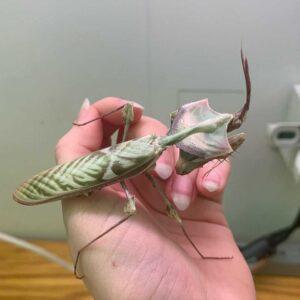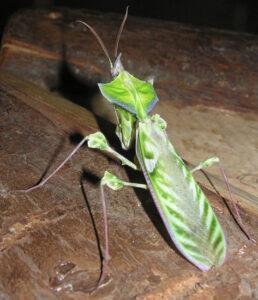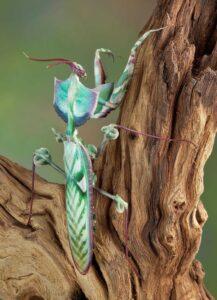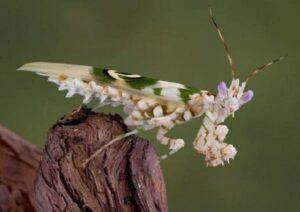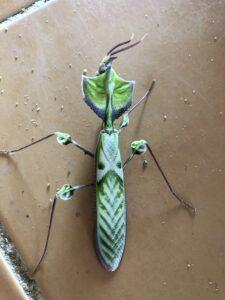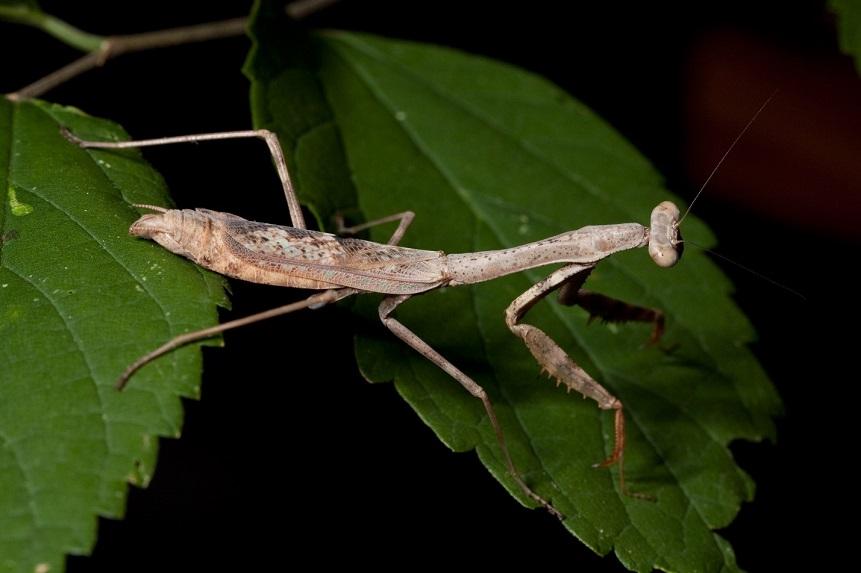Devil’s Flower Mantis (Idolomantis diabolica)
Updated on
17/11/2022The devil’s flower mantis, also known as the giant devil’s flower mantis, is one of the largest species of praying mantises. It is possibly the largest mantis that mimics flowers. Its beauty and dramatic poses have endeared it to the pet trade. It is the only species of its genus.
Scientific Classification
- Class:Insecta
- Order:Mantodea
- Family:Empusidae
- Genus:Idolomantis
- Species:I. diabolica
Conservation Status
Description
Female devil’s flower mantises grow to a size of 5.1 in (13 cm), while it is 3.9 in (10 cm) for a male. Their mostly green bodies are designed to mimic flowers that help them to camouflage. The head bears the antennae, compound eyes, and mandibles. Thousands of individual photoreceptor cells in its eyes enable good eyesight.
The antennae are a pair of long, thin bristles that allow sensory perception. The feather-like male antennae are more developed than the females allowing them to track down the other sex by detecting the pheromones released by the latter to indicate that they are ready to reproduce. The mandibles are used to puncture, tear and grind their food.
The thorax is divided into prothorax, mesothorax, and metathorax. Each part has a pair of legs, but the wings are only present in the 2nd and 3rd parts. The abdomen has the respiratory, reproductive, and other organ systems.
Distribution: This huge mantis is endemic to Kenya, Ethiopia, Malawi, Tanzania, Somalia, Uganda, and South Sudan.
Habitat: Wildflowers growing in its range.
Do They Bite/Sting: Yes.
Lifespan: Around a year.
Predators: Birds, spiders, lizards, snakes, and bats.
Behavior and Characteristics
Diet
Airborne insects are its prey, especially moths, flies, beetles, and butterflies. On seeing its prey, the mantis renders itself motionless. Its flower-like looks seduce the insect to its striking zone, where it grasps and firmly grips it using the tibia of its legs. Then the mandibles swing into action.
Defense Mechanism
When threatened, the mantis takes a defensive posture to scare and distract its predator. It involves raising its front legs to show off the prominent patterns at the ventral side of its thorax and abdomen. Similarly, the wings showcase a mixture of bright colors. The insect thus becomes a magnificent display of white, red, blue, black, and purple.
Life Cycle
1. Egg Stage
10-50 eggs are laid in a small, foam-like ootheca (egg capsule) by a single female. Temperature and humidity control the time taken for hatching, but usually, it is 50 days.
2. Nymph Stage
The nymphs eat small insects like fruit flies and houseflies after hatching. The ones that turn into males pass through 7 instars. The same is 8 for females.
3. Adult Stage
The females lower the tips of their abdomens and slightly raise their wings to expose the uppermost part of their abdomens. A pheromone is released in the process. Captive females have been shown to exhibit sexual cannibalism, where they bite off the head of the male while copulating.
Care Sheet
Enclosure size: The well-ventilated enclosure should be of size three times the length of the insect.
Substrate: The most effective substrates are soil or peat. Another good option is a layer of compressed coconut fiber.
Temperature: 86-104°F is ideal for the mantis.
Humidity: A daily spray is needed to maintain higher humidity levels of 40-50%.
Feeding: Readily available flying insects like moths, lacewings, butterflies, beetles, and houseflies.
Source
keepingexoticpets.com, whatsthatbug.com, inaturalist.ca, weirdlyodd.com




